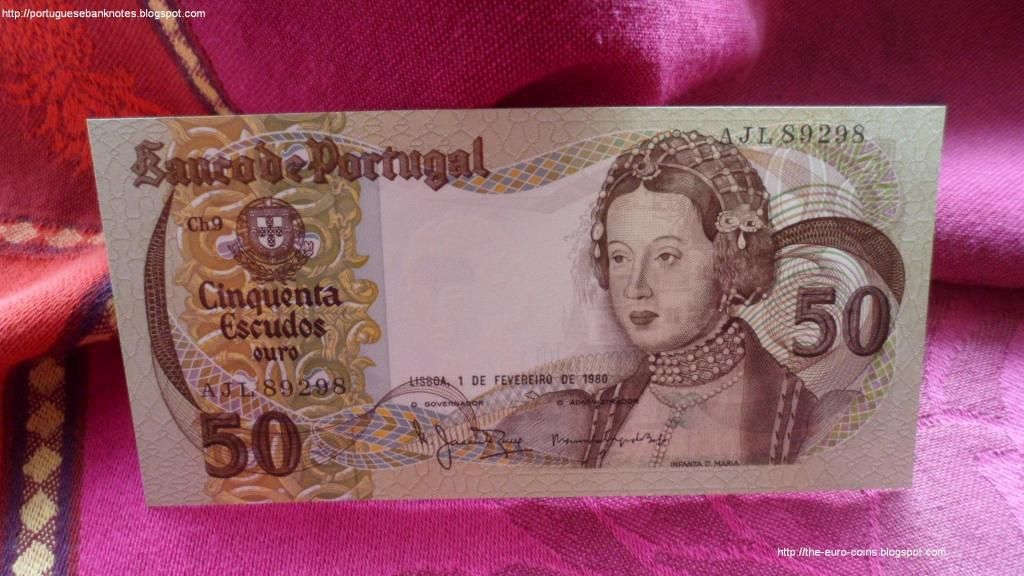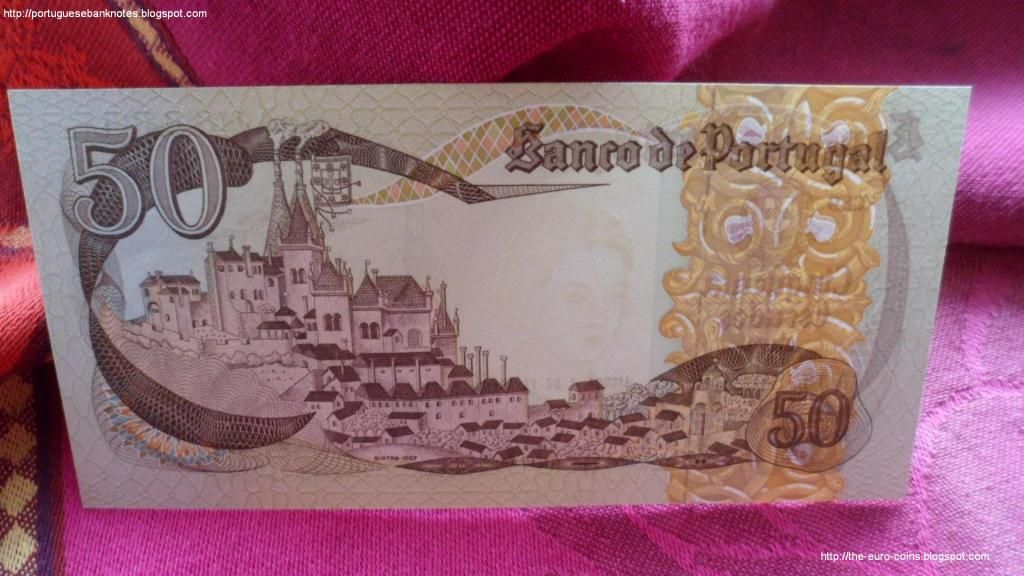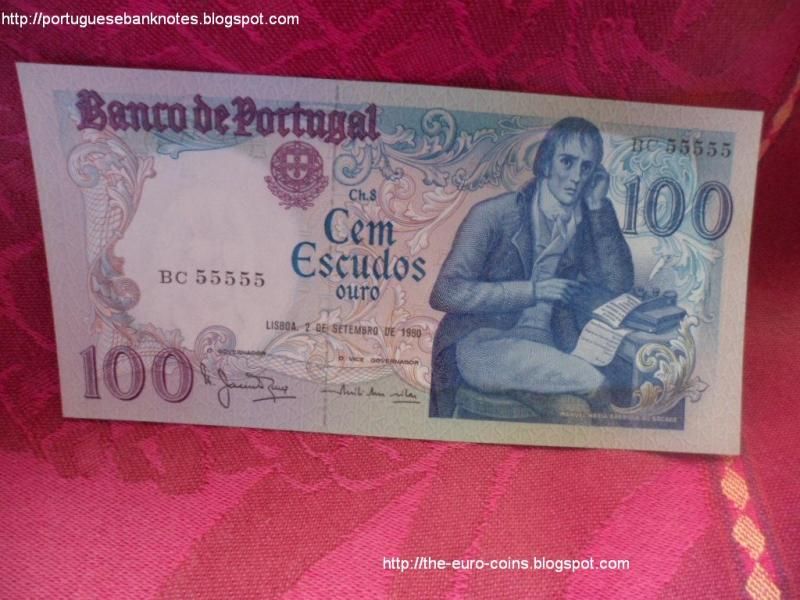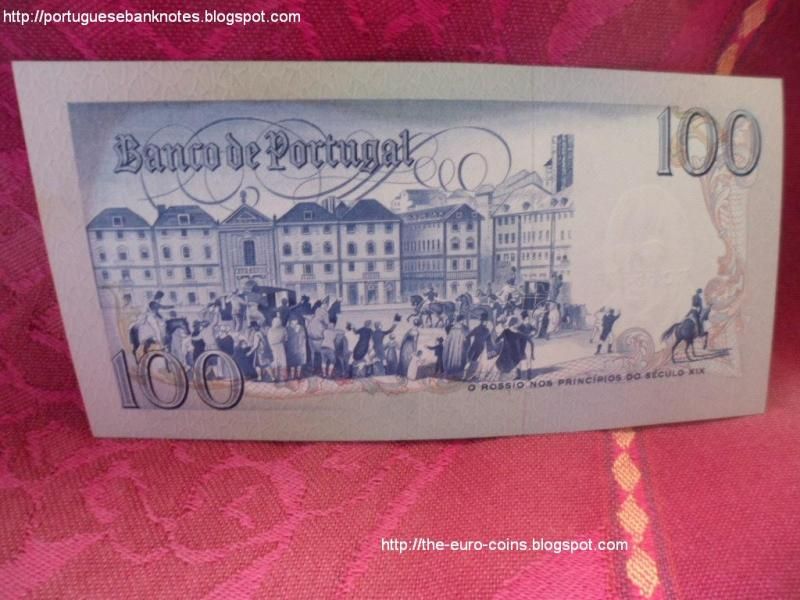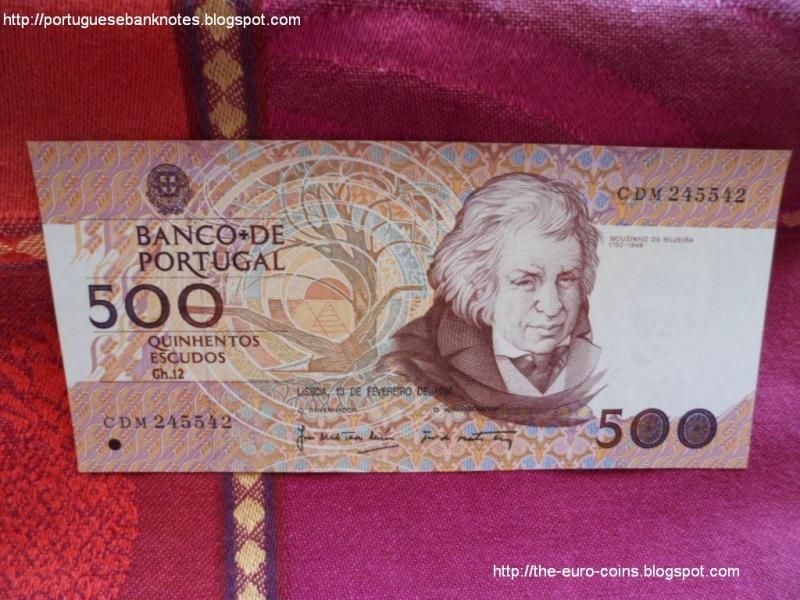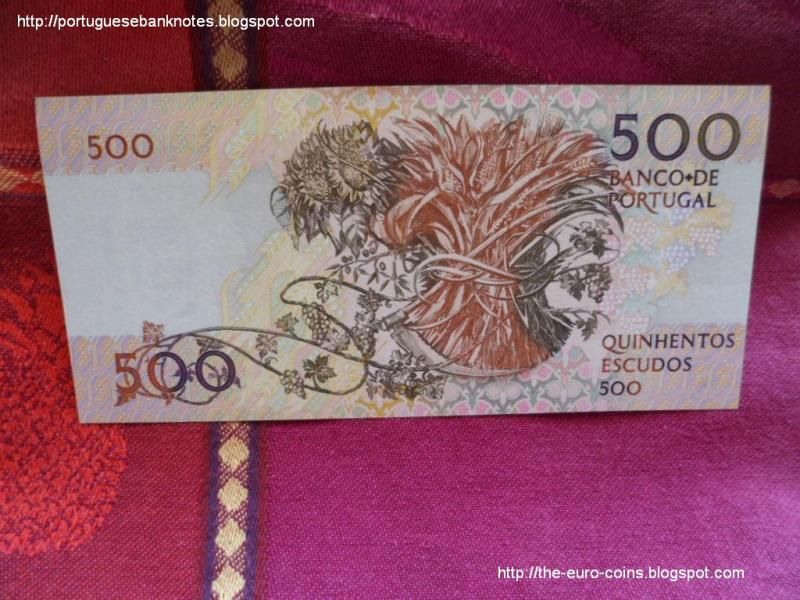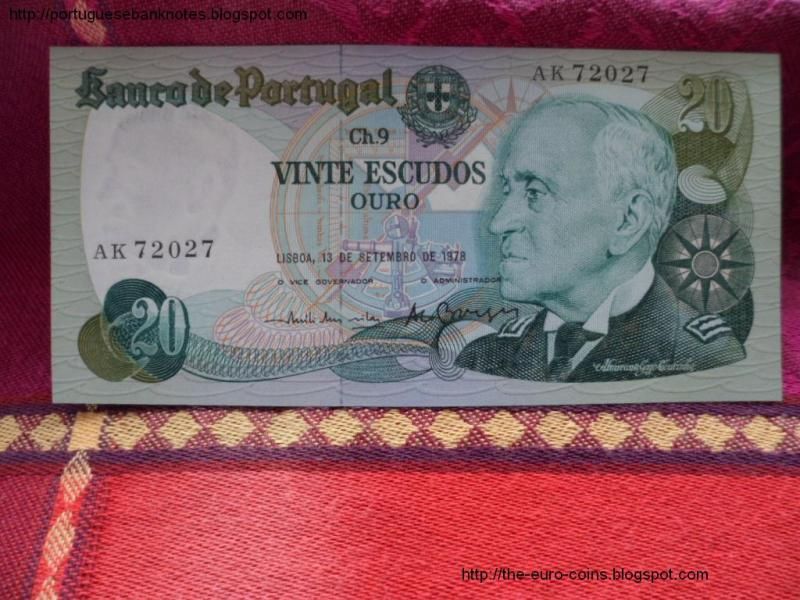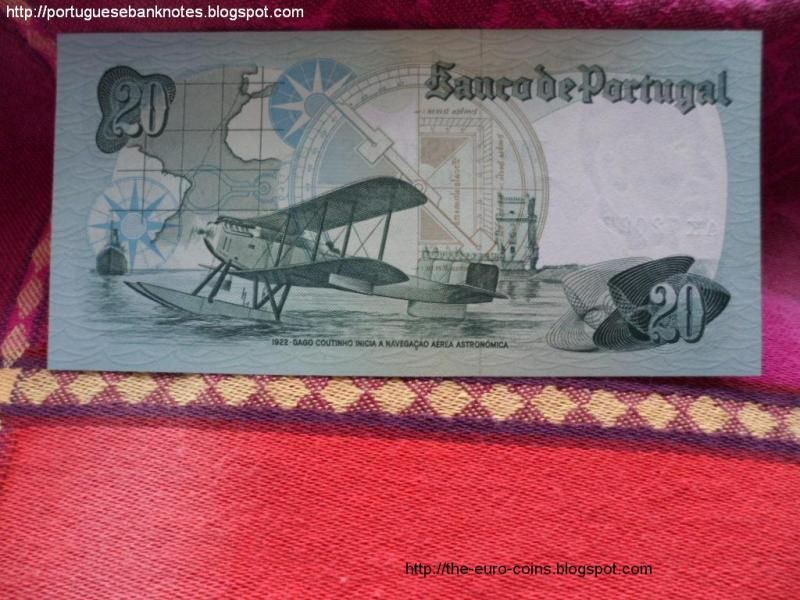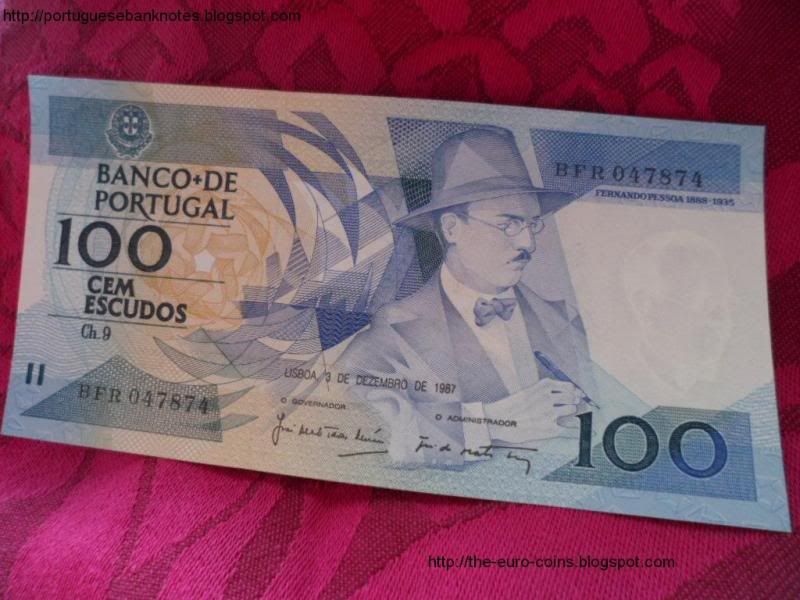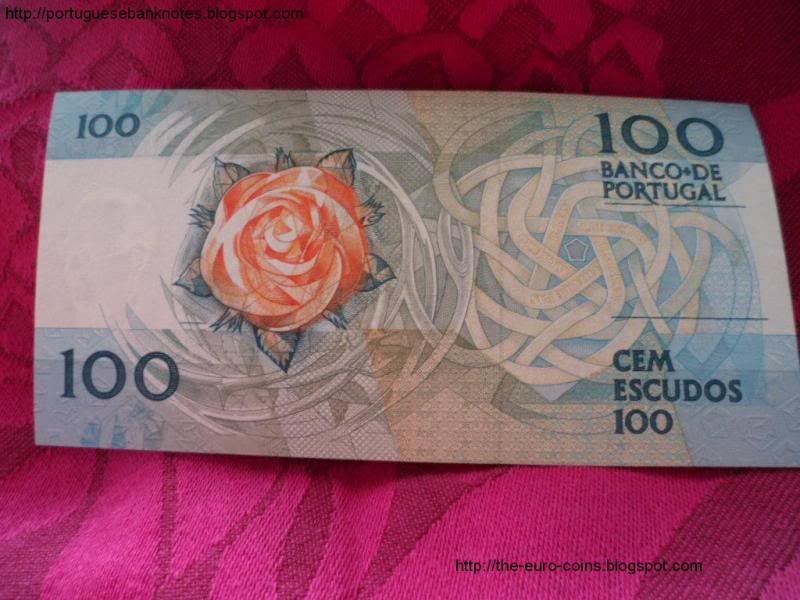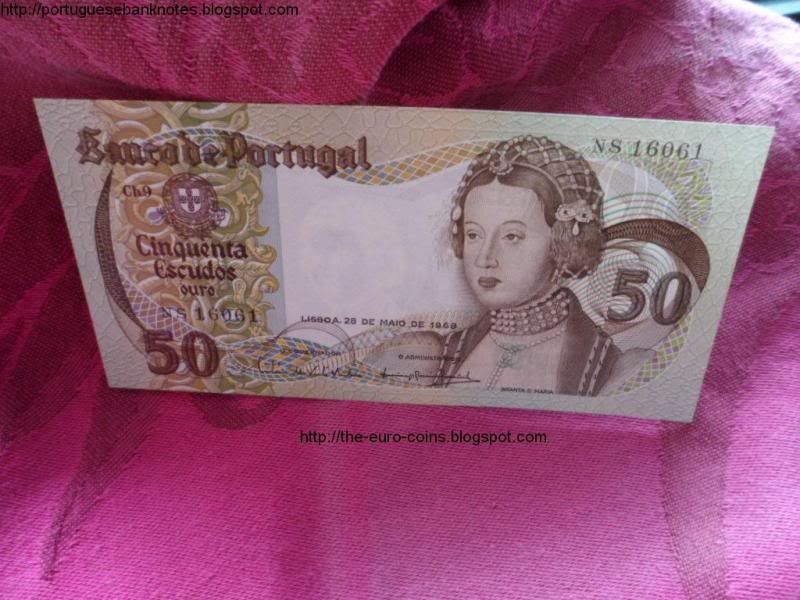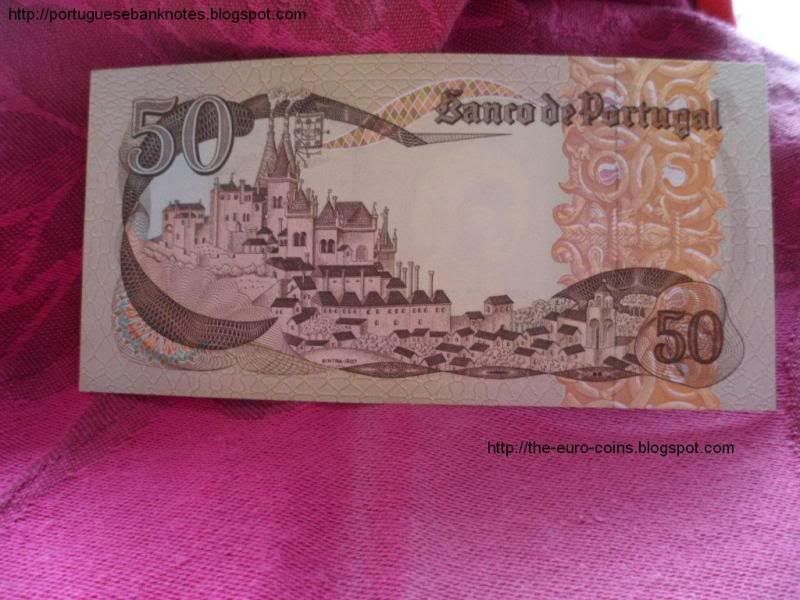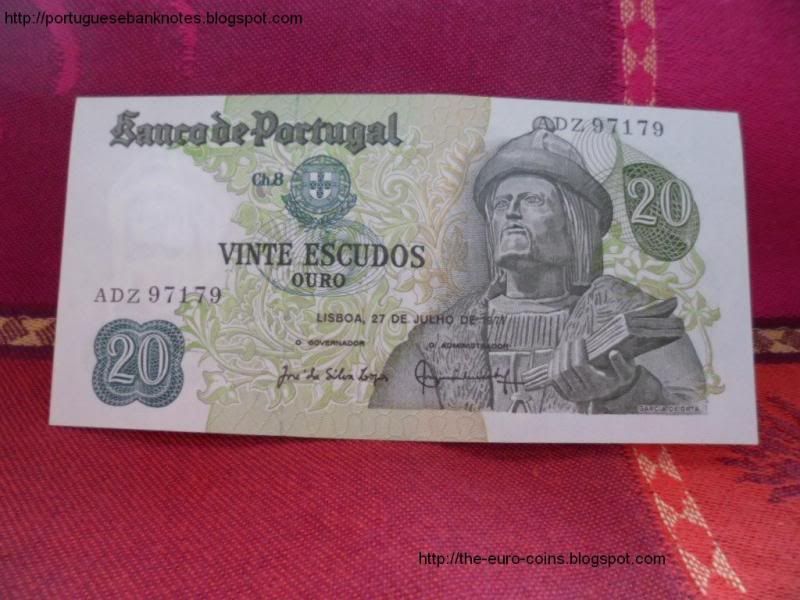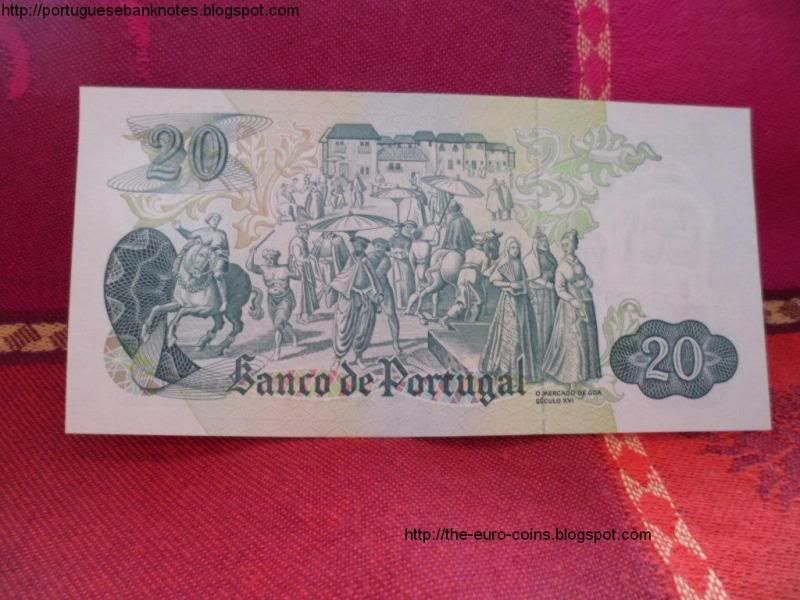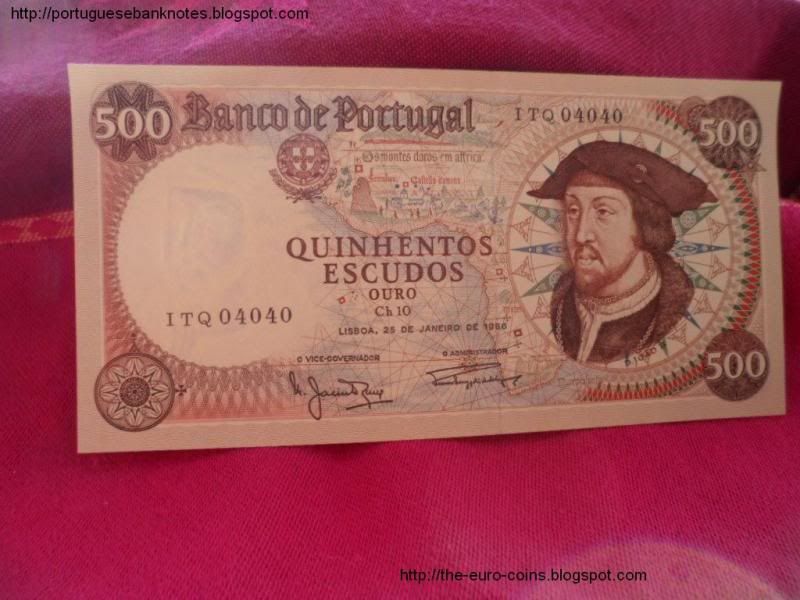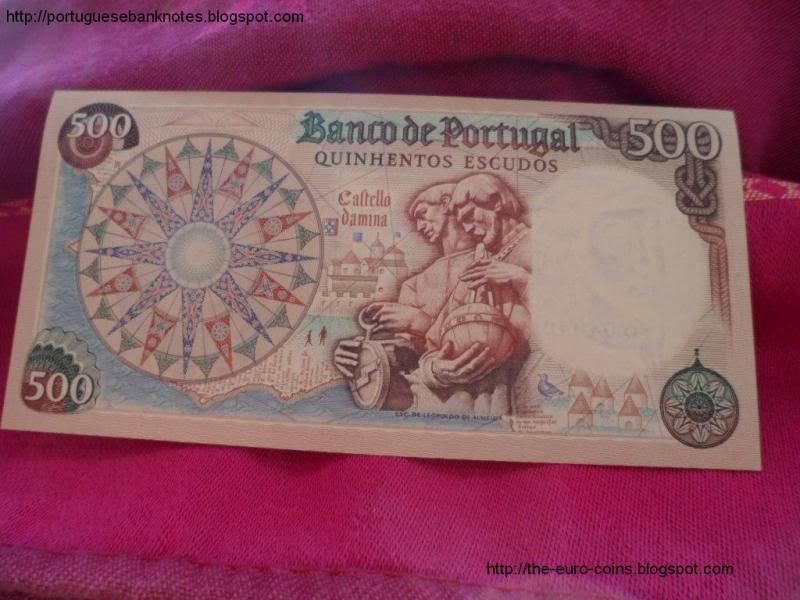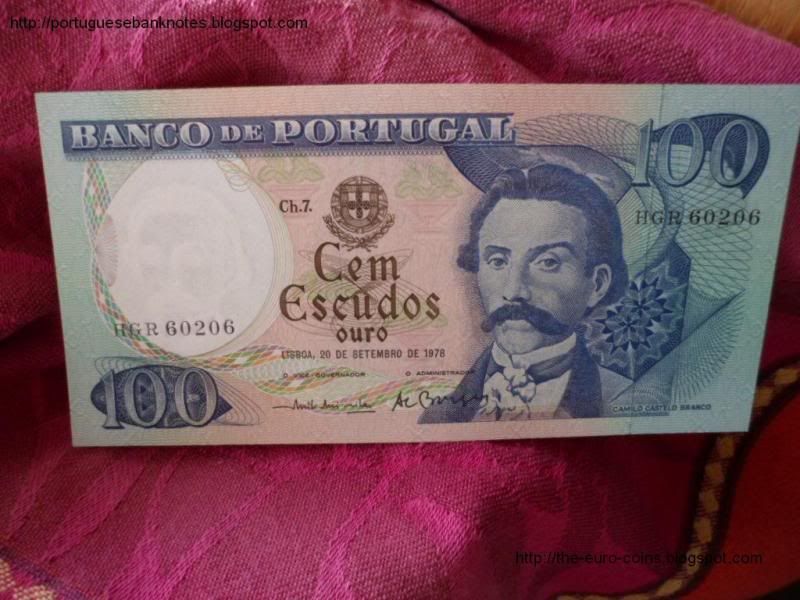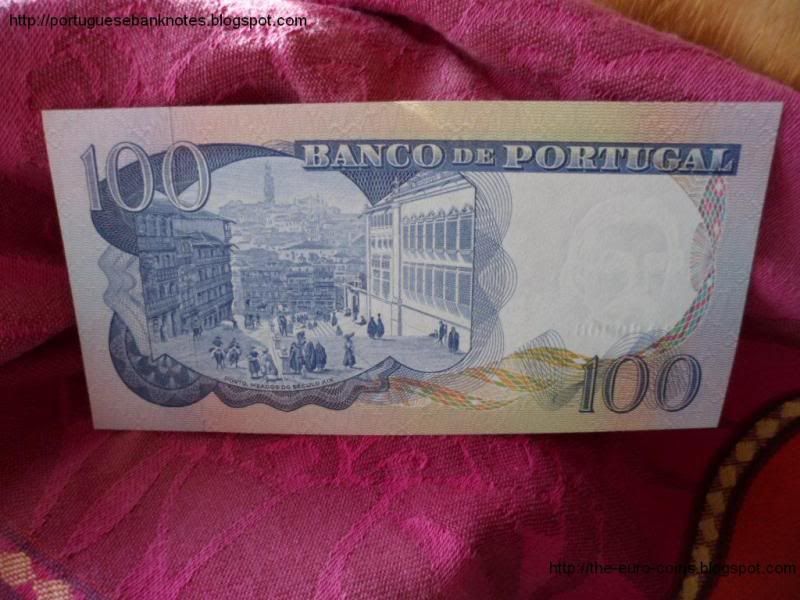Once again, Camilo Castelo Branco... Depicted in the image is one more uncirculated portuguese Banknote, illustrated with our Portuguese Novelist Camilo Castelo Branco, March 16, 1825 - July 1, 1890 - whose 58 novels range from Romantic melodramas to works of realism. He is sometimes known as the Portuguese Balzac. Born illegitimately into a family believed to have had a hereditary tendency to insanity, Camilo was orphaned in childhood and brought up by relatives. He studied irregularly at Porto, first medicine and later for the priesthood, but eventually abandoned these professions for a literary career). In the reverse, a magnificent 19th century street in the City of Porto.
First issue: 1965, 30 November
Issuing number: 168.192.000
Issuing number: 168.192.000
Second and last issue: 1978, 20 September
Issuing number: 41.732.000
Issuing number: 41.732.000
Recalled: 1987, 31 March


